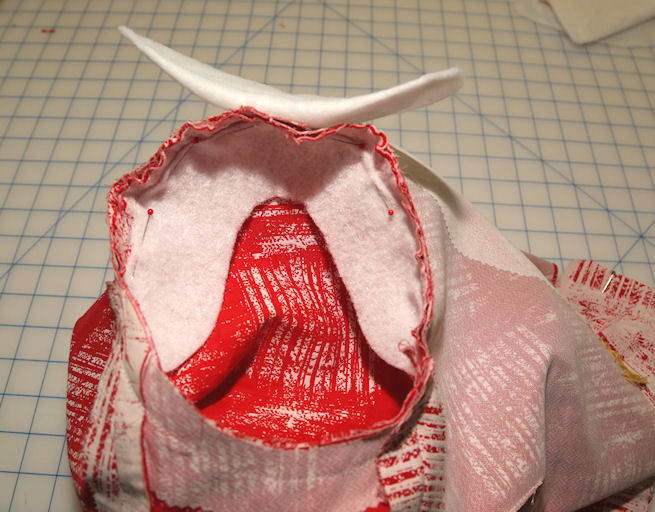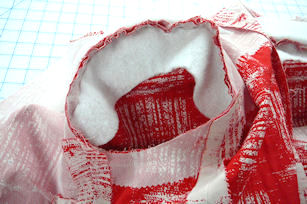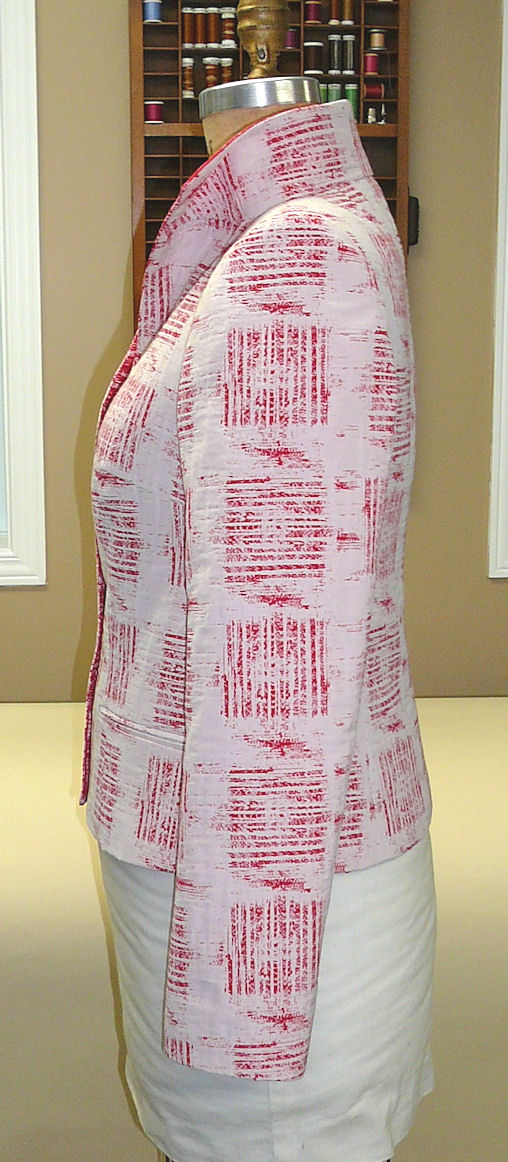
by Kathryn Brenne


Small shoulder pad and sleeve head cut and sleeve head after shaping with iron
After the sleeve is set in, try the garment on and pin the shoulder pads into place. The long tapered end of the shoulder pad sits toward the back. My jacket has very short shoulder seams and therefore required very small shoulder pads. I trimmed some small shoulder pads down to fit my garment.
Sleeve heads help to fill, shape and support the sleeve cap. I cut my own out of lightweight polyester batting. I cut a slightly rounded shape and then shape them as needed with a bit of steam and the iron.

Shoulder head sewn with a stab stitch to shoulder seam allowances
Using a stab stitch, sew the shoulder pad to each side of the shoulder seam. A stab stitch is similar to a running stitch, except that the needle goes straight through all layers and straight back up again rather than at a slight angle. If the shoulder pad is very small this stitching may be enough to hold it in place. If the shoulder pad extends to the seam, tack it at either end to the seam allowance. Do not pull your stitches too tight or the shoulder pad may show dimples on the right side of the fabric. kbbr_dkb56753_1 kbbr_dkb56757_1
The sleeve head sits into the cap of the sleeve. It should just cover the stitching line and not extend too far into the seam allowance. Hand-sew the sleeve head in place with a long overcast stitch.

Sleeve head pinned into position just over the stitching line

Sleeve head/shoulder pad sewn into place

Sleeve hanging straight
Once the sleeve is inserted and finished, finger press the sleeve cap, pushing the seam allowance into the sleeve and coaxing the cap to roll over the sleeve head. You should end up with a smooth sleeve cap with a nice roll to it.

